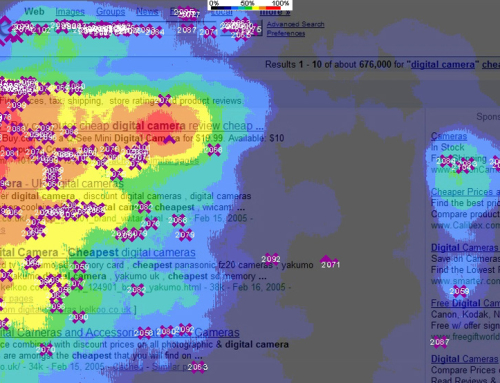If you’ve been out of the web development world for a few years, you may be surprised at how much the industry has changed. While an original web designer was mostly concerned with aesthetic appeal and visual design, the importance of language and structure within a website commands special attention these days. A web designer must be able to handle a wider range of tasks without being overwhelmed with constant changes to the industry. Here are what I consider to be some of the most important changes to the role of a web designer in the last 5 years.
1. Web Development and Font Variety
Before services like Font Deck and Google Fonts brought extensive web font variety to the masses, most web designers exported headings as GIFs when necessary. This process made the elements inaccessible and difficult for customers to edit or update. Now that web fonts are easily incorporated into any website, all of that troublesome exporting seems ancient. Web designers now have typographic control over everything they do on the web. While this change increased the overall quality of the average product, it also raised the standard for web designers. A thorough knowledge of web font usage is now a requirement for success as a web designer.
2. Fading Flash
Adobe’s Flash application once ruled over the web design world; however, a lack of accessibility and substance is leading to an inevitable demise. As the industry began to grow, many web designers believed that Adobe Flash was the answer to all of their web problems. Flash gave them access to creative fonts and freedom from the normal restrictions of the early Internet.
While the freedom for creativity leads to great eye candy, many website designs using Flash lack good substance. Many argue that Flash continues to have a place in web design today, but its role as a tool for compiling entire sites is almost completely gone. This is partly due to the fact that Flash does not function properly on Apple’s popular mobile devices. jQuery and CSS fill the space that Adobe’s Flash application leaves behind.
3. Social Prominence
Whether you like it or not, social media now plays a significant role in web development. During the last decade, sites such as Facebook, Twitter and YouTube have experienced amazing success. If you don’t have at least a basic understanding of social media sharing, becoming a successful web designer may be almost impossible. The integration and incorporation of social media sharing into your customer’s web strategies holds a lot of importance. Experts in this specific field command higher pay and rarely worry about available work opportunities.
4. Responsive Website Design
While the early days of web design had to evolve with the browser wars, web designers only had a few screen resolutions to worry about. In the world today, users access websites from an endless variety of devices. This change shook up the way web designers approach website construction. Media queries came to the rescue as an effective tool to respond to viewer screen size. Web designers now have the freedom to design specific styles for different screen sizes. This makes a website truly responsive.
5. HTML5
 After years of ineffective web design tools and platforms, HTML5 seems like the perfect medium for the future of the industry. While everyone wanted more semantic, content-rich websites, HTML5 and CSS3 handle much more than that. A modern web designer now enjoys the freedom to convey all customer information while creating his or her unique style and direction. The web designers of the early days would be so jealous!
After years of ineffective web design tools and platforms, HTML5 seems like the perfect medium for the future of the industry. While everyone wanted more semantic, content-rich websites, HTML5 and CSS3 handle much more than that. A modern web designer now enjoys the freedom to convey all customer information while creating his or her unique style and direction. The web designers of the early days would be so jealous!
Web design has come a long way since the days of existing simply as an extension of print design. As the industry develops, more technical skills continue to gain importance over the less-transferable print skills. The constant change and evolution of web design may seem overwhelming at times, but these changes keep the field interesting and challenging at all levels.






Thanks very interesting blog!
You are so interesting! I do not suppose I’ve truly read through something like that before.
So nice to discover someone with some unique thoughts on this topic.
Seriously.. thank you for starting this up. This site is
something that is required on the internet, someone with a little originality!